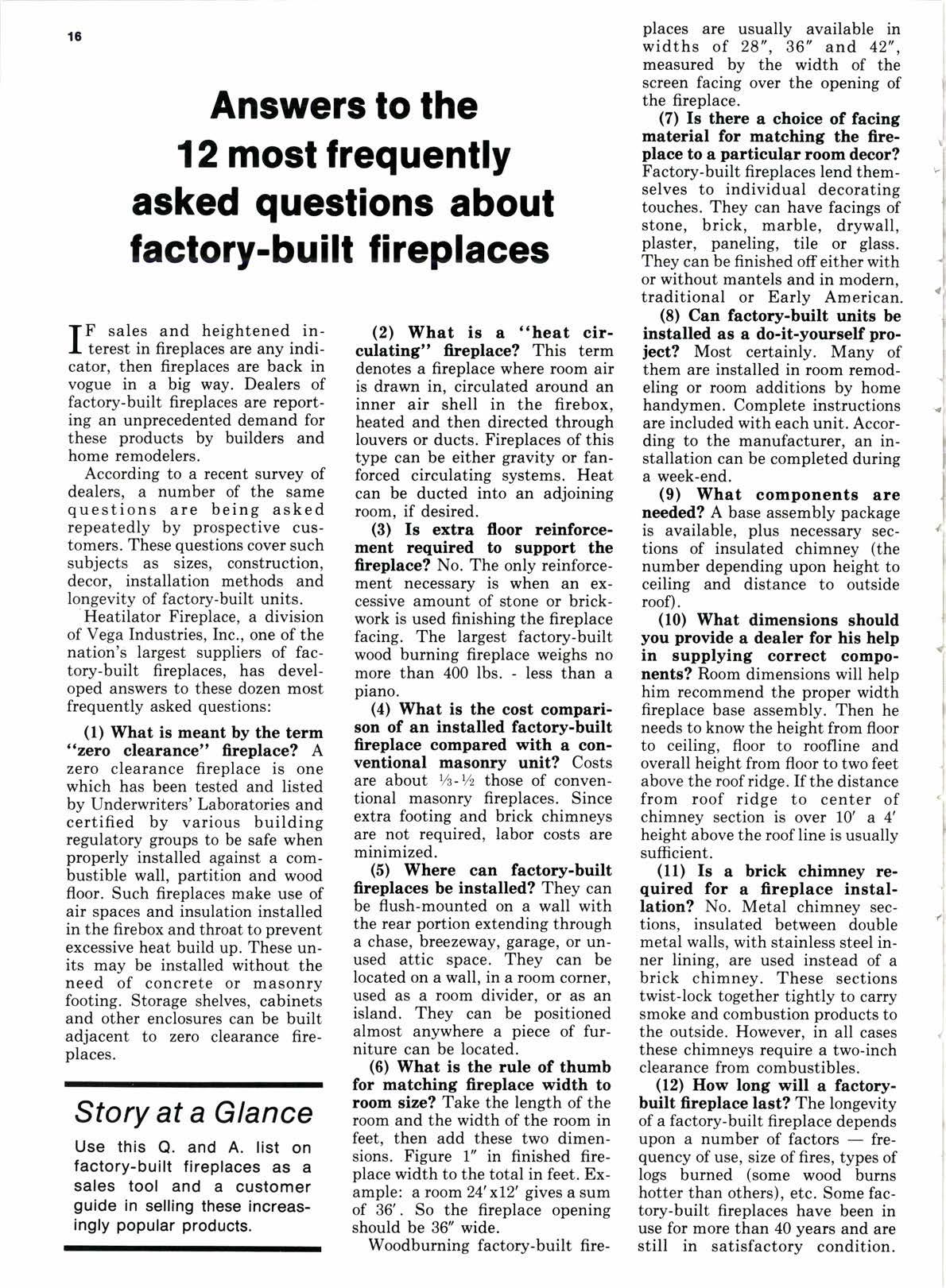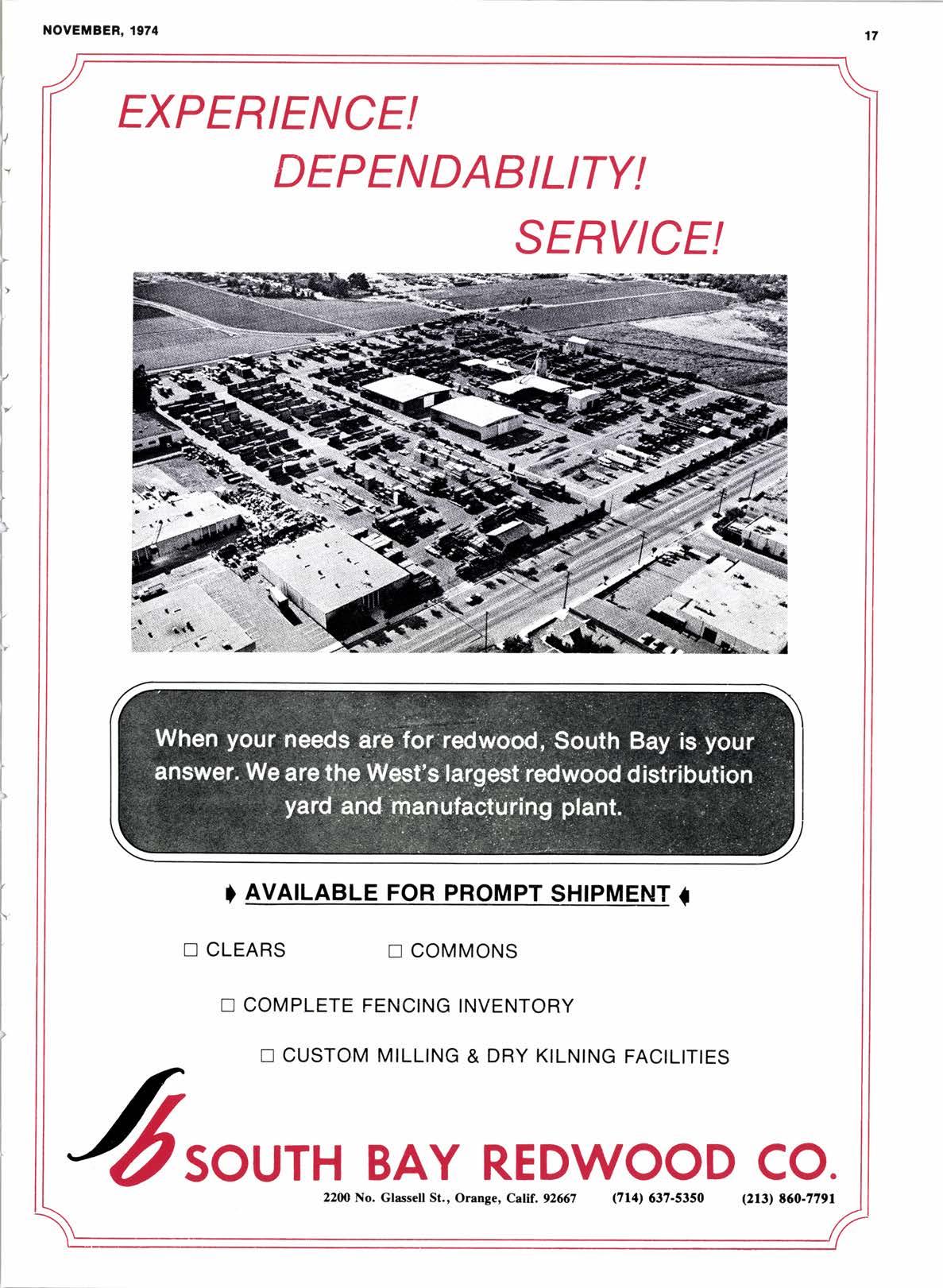
3 minute read
Answers to the 12 most frequently asked questions about factory-built fireplaces
JF sales and heightened in- I terest in fireplaces are any indicator, then fireplaces are back in vogue in a big way. Dealers of factory-built fireplaces are reporting an unprecedented demand for these products by builders and home remodelers.
According to a recent survey of dealers. a number of the same questions are being asked repeatedly by prospective customers. These questions cover such subjects as sizes, construction, decor. installation methods and longevity of factory-built units.
Heatilator Fireplace, a division of Vega Industries, Inc., one of the nation's largest suppliers of factory-built fireplaces, has developed answers to these dozen most frequently asked questions:
(l) What is meant by the term "rcro cle&rancett ffreplace? A zero clearance fireplace is one which has been tested and listed by Underwriters' Laboratories and certified by various building regulatory groups to be safe when properly installed against a combustible wall, partition and wood floor. Such fireplaces make use of air spaces and insulation installed in the firebox and throat to prevent excessive heat build up. These units may be installed without the need of concrete or masonry footing. Storage shelves, cabinets and other enclosures can be built adjacent to zero clearance fireplaces.
Story at a Glance
Use this Q. and A. list on factory-built fireplaces as a sales tool and a customer guide in selling these increasingly popular products.
(2) What ie a "heat circulating" fireplace? This term denotes a fireplace where room air is drawn in, circulated around an inner air shell in the firebox, heated and then directed through louvers or ducts. Fireplaces of this type can be either gravity or fanforced circulating systems. Heat can be ducted into an adjoining room, if desired.
(3) Is extra floor reinforcement required to support the fireplace? No. The only reinforcement necessary is when an excessive amount of stone or brickwork is used finishing the fireplace facing. The largest factory-built wood burning fireplace weighs no more than 400 lbs. - less than a piano.
(4) What is the cost comparison of an installed factory-built fireplace compared with a conventional masonry unit? Costs are about Vs-V2 those of conventional masonry fireplaces. Since extra footing and brick chimneys are not required, labor costs are minimized.
(5) Where can factory-built fireplaces be installed? They can be flush-mounted on a wall with the rear portion extending through a chase, breezeway, garage, or unused attic space. They can be located on a wall, in a room corner, used as a room divider, or as an island. They can be positioned almost anywhere a piece of furniture can be located.
(6) What is the rule of thumb for matehing fireplace width to room eize? Take the length of the room and the width of the room in feet, then add these two dimensions. Figure 1" in finished fireplace width to the total in feet. Example: a room 24'xL2' gives a sum of 36'. So the fireplace opening should be 36" wide.
Woodburning factory-built fire- places are usually available in widths of 28", 36" and 42", measured by the width of the screen facing over the opening of the fireplace.
(7) Is there a choice of facing material for matching the ffreplace to a particularroom decor? Factory-built fireplaces lend themselves to individual decorating touches. They can have facings of stone, brick, marble, drywall, plaster, paneling, tile or glass. They can be finished off either with or without mantels and in modern, traditional or Early American.
(8) Can factory-built units be installed as a do-it-yourself pro- ject? Most certainly. Many of them are installed in room remodeling or room additions by home handymen. Complete instructions are included with each unit. According to the manufacturer, an installation can be completed during a week-end.
(9) What components are needed? A base assembly package is available, plus necessary sections of insulated chimney (the number depending upon height to ceiling and distance to outside roof).
(10) What dimensions should you provide a dealer for his help in supplying correct components? Room dimensions will help him recommend the proper width fireplace base assembly. Then he needs to know the height from floor to ceiling, floor to roofline and overall height from floor to two feet above the roofridge. Ifthe distance from roof ridge to center of chimney section is over l0' a 4' height above the roof line is usually sufficient.
(ll) Is a brick chimney required for a fireplace installation? No. Metal chimney sections, insulated between double metal walls, with stainless steel inner lining, are used instead of a brick chimney. These sections twist-lock together tightly to carry smoke and combustion products to the outside. However. in all cases these chimneys require a two-inch clearance from combustibles.
(12) How long will a factorybuilt fireplace lagt? The longevity of a factory-built fireplace depends upon a number of factorsfrequency ofuse, size offires, types of logs burned (some wood burns hotter than others), etc. Some factory-built fireplaces have been in use for more than 40 years and are still in satisfactory condition.










